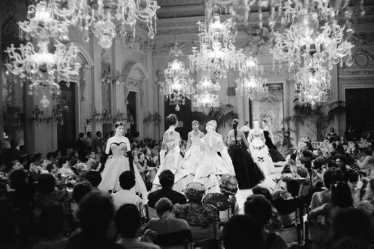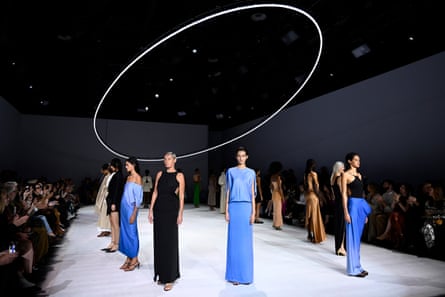
On Tuesday, Bianca Spender presented her 15th anniversary show at Australian fashion week in Sydney where models walked on a cream carpet beneath an enormous oval-shaped light installation. Earlier that day at Aje’s presentation, guests sat on a 195m-long bench made from accordion-pleated paper.
Historically, the luxe backdrops and props for fashion week shows would be discarded after a single use. But for Spender and Aje, these set pieces will be repurposed and reused. Spender’s lighting will be reinstalled in the brand’s design space. Aje’s bench will be used for in-store visual merchandising and future events. These were two of numerous small changes and gestures at Australian fashion week – which wrapped on Friday – that indicate a shift in designers’ understanding about the environmental impact of runway shows.
Although there are questions about the necessity of fashion weeks in the face of the climate crisis, these gestures are indicative of the work Australian fashion week has been doing to address its impact since launching a sustainability roadmap in 2019.
“We’ve made some really robust progress in that five-year period,” says Natalie Xenita of global entertainment conglomerate IMG, which has staged Australian fashion week since 2005. “We’re trying to make our footprint as environmentally friendly as possible.”
Like most good intentions, a gap remains between realisation and reality. Although most fashion week shows are staged at the Carriageworks in Eveleigh, or off-site at one of Sydney’s geographically beautiful locations (thus saving resources on building sets), the Australian fashion week sustainability roadmap is largely discretionary.
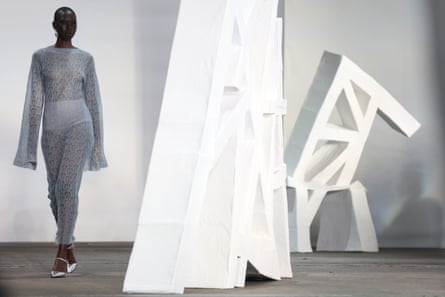
Xenita says that although organisers work closely with designers to prioritise post-show use of runway sets, “ultimately that is up to each designer”.
Instead, the event’s focus is on small-picture sustainability measures like eliminating single-use plastics, food waste management and energy-efficient screens and lighting. The total footprint of the event, including the emissions from the electricity used at Carriageworks, plus travel and transport, has not been calculated.
Globally, fashion weeks have been criticised as ‘inherently wasteful’ for the resources invested in building sets or making garments for a single show; the catering, printed invitations and gift bags; the greenhouse gas emissions associated with international or interstate travel; and the consumption promoted by trend-focused collections.
A 2020 study from fashion-tech company Ordre.com and the Carbon Trust found the carbon footprint associated with travel to the four big fashion weeks – New York, London, Milan and Paris – amounted to 241,000 tonnes of carbon every year.
after newsletter promotion
Despite this, Clare Press, the presenter of The Wardrobe Crisis podcast, is adamant the solution is not to scrap fashion weeks altogether. “Fashion weeks are important business. While [they] cop plenty of criticism for excess, is it really any different from a food, or sporting event?,” she says. “No one says: we’ll just stop holding the Australian Open for climate reasons.”
Locally, Australian fashion week is following in the footsteps of a global movement to make fashion weeks and the wider industry more sustainable. Earlier this year, Copenhagen fashion week set the benchmark – in order to show on the schedule, brands had to meet 18 ‘sustainability requirements’, including that 50% of every collection be made from ‘smart materials’ (such as deadstock, or upcycled materials), no single-use plastic or packaging, zero-waste set design as well as carbon inset and offsets.
“Today Copenhagen fashion week is the boldest actor,” says Press, who sits on its advisory board – although it’s not easy to meet the Copenhagen standards, so some brands fail to make the cut. “I’d love to see events in Sydney and Melbourne adopt something similar.”
Despite the elective nature of AFW’s sustainability roadmap, several designers have begun to adopt more conscious approaches to their runway shows.
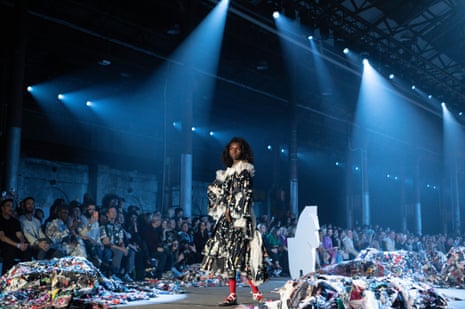
In his collaboration with Akira Isogawa, Iordanes Spyridon Gogos remodelled remnant fabric to create unique patterns with a fabric treatment called compressing. Using the technique, Gogos upcycled more than 1000 kgs of fabric to create one-off garments and elements of the set.
The event – and the industry – is inextricably linked to trends and seasons; and in Australia, about 260,000 tonnes of clothing reaches landfill each year. But New Zealand designer Maggie Hewitt, founder of Maggie Marilyn, wants to see a more long-term approach beyond the runway.
“It was important to me that I styled pieces from our [core line] with the fashion week collection,” she says. “We’re not trying to tell our customer that they need to buy a whole new wardrobe every season, but rather it’s actually showing them on the runway how we style new pieces back with existing ones.”
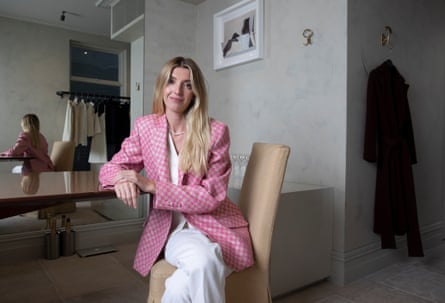
The founder of Ngali, Denni Francisco, who staged the first solo Indigenous runway show during the week, approached the styling of her collection in a similar way. “Being able to style a shirt from six months ago with something new is pretty exciting,” she says. “We just don’t need that many clothes.”

